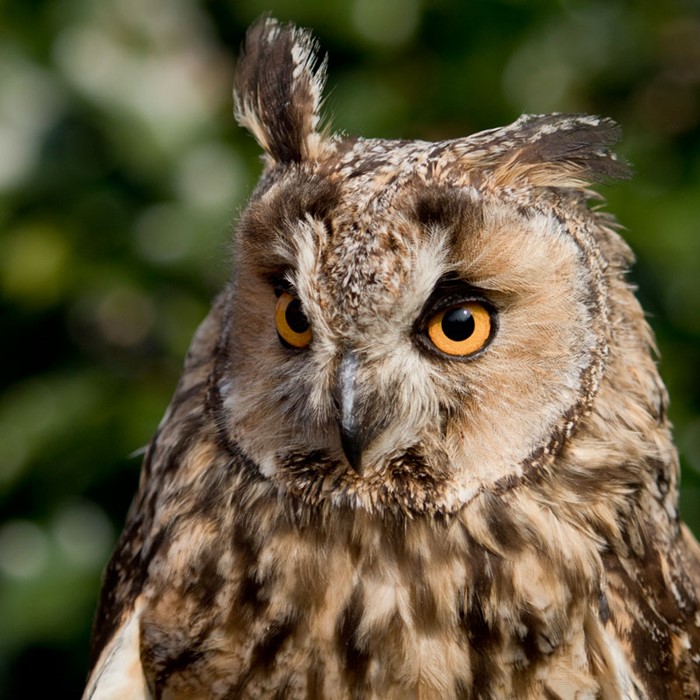
Long-eared Owl
"Rusty"
Rusty is such an adorable character and one of the more rare owls to spot in the wild in the UK. Rusty gets very excited when it is his time to come out and fly and can be seen 'dancing'! More recently he has become a little thief when he stole someone's teddy in our show!
Click below to Sponsor "Rusty"
LONG-EARED OWL FACTS
Asio otus, previously Strix otus
TERRITORY/LOCATION
Long eared owl has an extensive range extending throughout North America, several Atlantic Islands, Europe and Asia as far as Japan. Partially migratory, moving south in winter from the northern parts of its temperate range.
HABITAT
Long-eared owls inhabit dense vegetation close to grasslands, as well as open forests shrub lands. They are common in tree belts along streams of plains and even desert oases. They can also be found in small tree groves, thickets surrounded by wetlands, grasslands, marshes and farmlands, they are secretive and rarely seen.
CONSERVATION STATUS
Least Concern
DIET
Hunting in open country, catching field voles, shrews other small rodents and birds
SIZE/WEIGHT
Long-eared owls are medium-sized owls. Females are generally much larger than males.
Females
260 – 435g 27 – 40cm long
Males
220 – 305g 35 – 37.5cm long
The wingspan of adults ranges from 90 to 100 cm.
NESTING
It nests in trees, often conifers using old sticks from other nest. Breeding season is from February to July, average clutch 4-6 eggs and the incubation time averages 25-30 days. Owlets begin to explore the nest and close branches around 3 weeks and are capable of flight from 5 weeks, they still rely on being fed for up to 2 months. Long-eared owls usually begin breeding at 1 year.
LIFE EXPECTANCY
11 years old is the Average age in the wild
27 years Oldest record in the wild
SCIENTIFIC
CLASSIFICATION
KINGDOM
Animalia
PHYLUM
Chordata
CLASS
Aves
ORDER
Strigiformes
FAMILY
Strigidae
GENUS
Asio
SPECIES
A. otus
